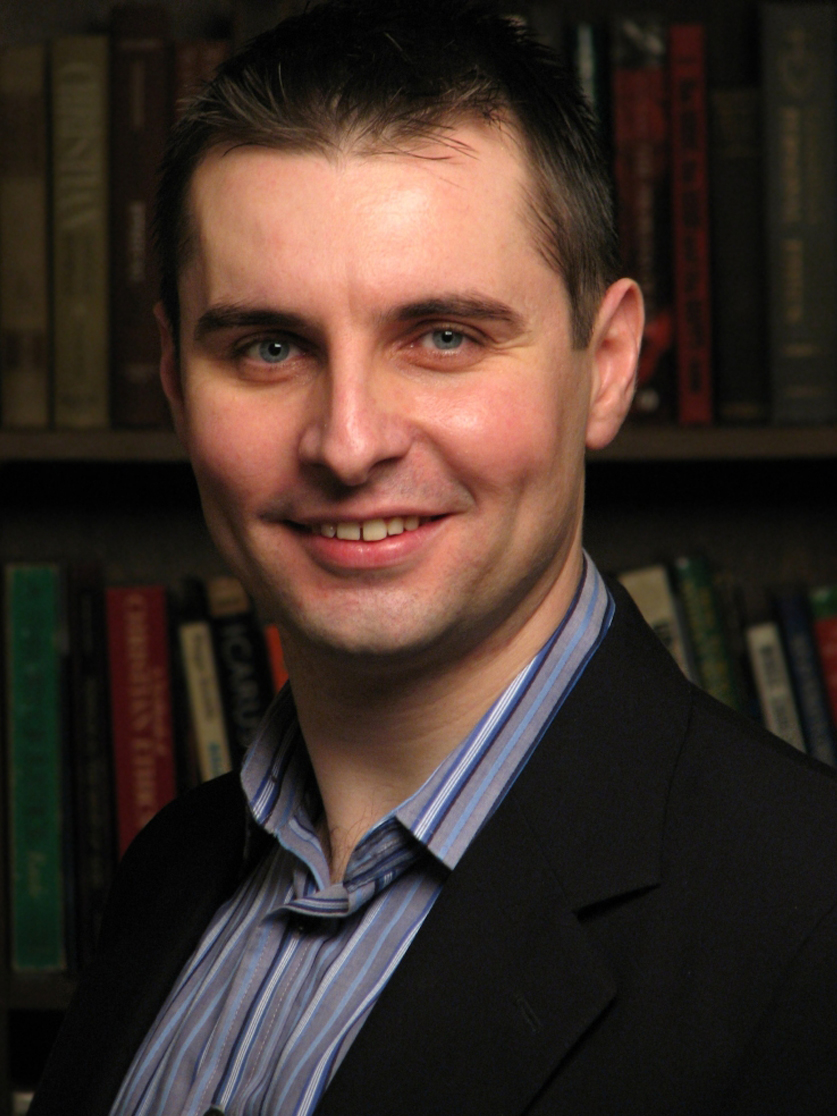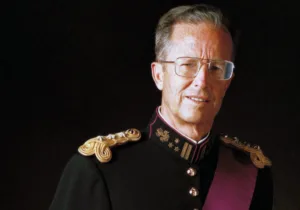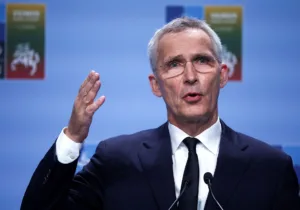In 1918 after the disintegration of the Austro-Hungarian Empire, a new democratic state, the Czechoslovak Republic, was established. Scholars disagree on which factors unified Czechs and Slovaks. Some underscore important commonalities between the two adjacent Slavic nations; in their view, Czechoslovakia naturally emerged from cultural, linguistic, and ethnic similarities. Others see the creation of Czechoslovakia more as a marriage of convenience resulting from political calculations and various external pressures. By forming a common state, Slovaks would be protected from imposed Magyarization and Czechs from Germanization. T.G. Masaryk, who later became Czechoslovakia’s first president, exemplified political realism when he, as cited by Carol Skalnik Leff, wrote, “Together, [a Czechoslovak alliance] would raise the Slav majority of the population to almost nine million, and be so much stronger vis-á-vis the minority.” Although Czechs and Slovaks were in many ways similar, differences in their historical experiences, economic development, and religious tendencies were also significant.
The political union lasted 20 years as Slovak nationalism, adverse economic conditions, and the regional political climate contributed to a temporary separation. Andrej Hlinka led the nationalist Slovak People’s Party to victory in the 1925 elections. The 1938 Munich Agreement (sometimes called the Munich betrayal) allowed Nazi Germany to claim the Sudetenland part of Czechoslovakia; Hungary annexed a portion of Slovakia. Under pressure from Slovak nationalists and Nazi Germany, Slovakia became an independent state and German vassal in 1939. Many Slovaks eschewed this fascist regime, leading to the 1944 Slovak National Uprising. After the Second World War, Slovaks and Czechs, supported by the Allies, reunited and reconstituted the prewar Versailles order.
In the 1946 elections, the Communist Party of Czechoslovakia triumphed among Czechs, while 62 percent of Slovaks voted for the Democratic Party. The Communists’ popularity in Czechoslovakia waned, leading to the 1948 Communist coup d’état that ended anything even slightly resembling democracy. The Czechoslovak Socialist Republic came into existence, and for the next 40 years was a satellite of another great power—the Soviet Union. The country slavishly followed the Soviet model, undergoing forced nationalization and economic centralization, agricultural collectivization, and cultural censorship. Full integration into the Eastern Bloc occurred when Czechoslovakia joined the Council for Mutual Economic Assistance and the Warsaw Pact. During this 40-year period, the country significantly reduced economic and standard of living gaps between its two parts.
In 1989, hundreds of thousands of Czechs and Slovaks peacefully demonstrated for regime change. In just a few weeks, the Communist regime fell, and free elections were held in 1990. When the Czech Václav Havel was elected as President of a free Czechoslovakia and Slovak Alexander Dubček became Chairman of the Federal Assembly, most expected that the two partners would live happily ever after in common matrimony and would be able to easily resolve lingering grievances in the new democratic context. However, not long after the Velvet Revolution, the spouses experienced a serious marital crisis that presaged the final permanent dissolution of their 74-year marriage.
Between 1990 and 1992, many heated debates occurred between Czech and Slovak political elites regarding issues such as the country’s new name, constitutional arrangement between the two nations, and speed of economic reforms. Only a fraction of Czechoslovakia’s population supported creating two independent states. Furthermore, none of the major political parties had the establishment of two separate political entities in their platforms. In the democratic elections held in 1992, Vladimír Mečiar’s Movement for a Democratic Slovakia won the Slovak elections, and Václav Klaus’ Civic Democratic Party–Christian Democratic Party alliance prevailed on the Czech side. The fact that neither political party included secessionist objectives before the parliamentary elections cannot be overemphasized. Despite this, the following month, Czech and Slovak leaders announced that Czechoslovakia would amicably split into two states, and the union shockingly ceased to exist several months later.
The other two ethno-federal states, Yugoslavia and the Soviet Union, disintegrated due to a combination of cultural, religious, and economic factors as well as grievances related to past conflicts. However, the Czechoslovak divorce should not be viewed as the natural culmination of irreconcilable differences. Czech sociologist Jiří Musil well summarized the paradoxical nature of the disintegration of the Czechoslovak state when he wrote, “Czechoslovakia disintegrated in spite of the fact that the two societies, at the time of the split, had substantially more in common—at least in sociostructural terms—than they had at the time of Czechoslovakia’s formation. At the beginning of the 1990s, both featured similar economic and social structures, and demographic behavior, and nearly identical legal, technical, and educational systems. Slovakia’s level of urbanization approached that of the Czech Lands and economic interdependence was very high. In spite of these shared characteristics, the state broke up.”
Causes of divorce in multinational states are usually highly complex. Students of nationalism, in an attempt to simplify the discourse, often divide these causes into two basic categories: “grievances” and “greed.” In the breakup of Czechoslovakia, both elements were present, despite the popular yet incorrect belief attributing the divorce primarily to Slovak nationalism that was fueled by numerous real or perceived grievances. These complaints included the perception that Czechs structured the Czechoslovak economy to disadvantage Slovaks, including a decision to halt Slovak production of heavy military weaponry that considerably increased unemployment in Slovakia. Slovaks also opposed Prague’s centralism, which they believed directly contributed, among other things, to their economic disadvantages. Furthermore, Václav Klaus’ vision of the radical and rapid transformation of Czechoslovakia’s economy and fervent belief in the invisible hand of the market did not correspond with the prevalent Slovak approach of partial privatization and gradual economic transformation. This war of visions hastened the collapse of the unified state.
Czech paternalism also caused Slovaks great distress and concern. Slovaks were always regarded as the inferior “younger brother” in the relationship. Czech columnist Petr Příhoda candidly writes that Czechs “did not want to give up stereotypes of Slovak inferiority.” He goes on to note that “Slovaks were looked on as poorer, less educated, less technically skilled, less enterprising, politically immature, etc.” While this description of Slovaks corresponded with reality in the nineteenth century, it was a mere stereotype by the last quarter of the twentieth century. After 1989, Slovaks became even more concerned about their lack of international visibility and felt that Czechs monopolized Czechoslovak foreign relations. It was upsetting for the Slovak public to hear Western journalists refer to Alexander Dubček as a Czech politician or well-known Slovak athletes as Czech players. Some politicians suggested that Slovakia pursue full European integration as a separate political entity with its own chair in the European Parliament and star on the European Union flag.
As is often the case in marriage, these grievances were mutual. Czechs often pointed out the lack of gratitude on the side of their younger brother. As alluded to earlier, Slovaks did gain economic prosperity during the Communist era. Czechs believed that while they economically sponsored their weaker partner, Slovaks took Czech altruism for granted. In the period between the Velvet Revolution and Velvet Divorce, a survey revealed misunderstandings between the two partners: while 69 percent of Czechs believed they were subsidizing Slovakia, 63 percent of Slovaks believed the opposite. Many Czechs thought Slovaks were projecting blame on them instead of taking responsibility for their own affairs. They were also concerned about Slovaks’ apparent hesitation in fully turning towards the West and Slovak nationalistic sentiments.
Without minimizing the role of the aforementioned grievances in the divorce, they did not definitively lead to the partners’ final separation. Based on research data documenting public perception of Czech and Slovak relations, Slovak sociologists Martin Bútora and Zora Bútorová correctly conclude that “the creation of an independent Slovak republic was more an unintended outcome of the postcommunist panic and confusion exploited by ambitious politicians than the culmination of Slovak national emancipation.” Greedy pragmatism of leading Czech politicians who negotiated the breakup and self-serving populism of key Slovak officials played crucial roles in Czechoslovakia’s divorce.
Polls taken between 1989 and 1993 reveal that the majority of Czechs and Slovaks did not favor the dissolution of the unified state. Czechoslovakia’s President Václav Havel was one of the proponents of a so-called “authentic federation,” which had a potential of becoming a new marital agreement. His proposal for a national referendum as well as public attempts such as a petition signed by over two million people and a “light bulb referendum” were rejected. Despite significant popular support for a referendum, political representatives in both parts of the country ignored the will of the people. A poll from several months after Czechoslovakia split again shows the paradoxical nature of Czechoslovakia’s divorce: 60 percent of respondents stated that if the referendum had been held, they would have cast their vote against the breakup of the common state.
Many view Slovak nationalism as the primary cause of the Velvet Divorce. This popular yet erroneous view has been challenged by scholars such as Abby Innes, who in her book Czechoslovakia: The Short Goodbye defends the thesis that “attributing the final divorce to an irreconcilable nationalist conflict is in fact deeply misleading… The separation was neither an expression of deep nationalist enmities between Czechs and Slovaks—their often fractious history notwithstanding—nor was it merely a symptom of transition, of the multiple stresses afflicting the state. Rather it was a process manufactured by a ruthlessly pragmatic Czech right, abetted, when push finally came to shove, by a populist and opportunist Slovak leadership.”
Whether the split of Czechoslovakia was inevitable will likely remain a mystery and subject of lively scholarly debate. One thing seems certain: Czechoslovakia had the greatest potential of all three disintegrated multinational states at that time to disprove the axiom: “Nationalism is the last stage of communism.” The dissolution of Yugoslavia took place in the context of horrific ethnic violence. The demise of the Soviet Union was also accompanied by regional conflicts. The divorce between Czechs and Slovaks, however, was peaceful. No people were killed or injured, no property was destroyed, and there was very little acrimony between the people. For these reasons, the breakup of Czechoslovakia is often referred to as the Velvet Divorce.
The divorce’s architects made a serious political decision for which they lacked a popular mandate, violating basic democratic principles. Whether Slovaks and Czechs could have made the marriage work or if a referendum would have only prolonged quarrels and eventually lead to divorce remains an open question. If the divorce had not occurred, Czechoslovakia would be celebrating its centennial this year. Instead, Slovakia and Czechia recently turned 25 years old. The pains of divorce have largely been forgotten as most citizens accepted the new reality and in retrospect view the breakup in a mostly positive light. The younger brother has become an equal and, in some respects, envied sibling. Slovak and Czech politicians tell us that the mutual relationship has never been better, and there is no incongruity between their words and public opinion. This is part of the irony of Czechoslovakia’s history.
Unlike in Yugoslavia, religion did not play an important role in Czechoslovakia’s divorce, undoubtedly contributing to its tranquil disintegration. Some Slovaks viewed Czechs as too secular and lacking adequate respect for the Christian tradition, but although this was an important grievance a half-century earlier, the systematic atheization of society during the Communist era to a large degree succeeded in separating religion from politics and relegating the former to the private sphere. While the religious component was an important element leading to the creation of a prewar Slovak state, it was absent from post-communist negotiations of the Velvet Divorce. In a society comprised predominantly of self-proclaimed atheists, nominal Christians, and practicing Christians who would not mix religion and politics, none of the relevant political actors attempted to use religion as a tool of political mobilization.
Unsurprisingly, Czechoslovakia’s divorce has left little, if any, negative influence on the relationships between churches and individual Christians in Slovakia and Czechia. Overall, these relationships are characterized by mutual respect, cooperation, and friendship. However, state-church relations have been affected by the divorce as the two countries diverged on issues such as the restitution of church property confiscated by the Communists; the legislation governing the economic support of state-registered churches and religious societies; and the religious registration law, which in Slovakia prevents religious groups with less than 50,000 members—including Muslims—from becoming officially recognized by the government.
In 1974, Martin Marty coined the term “public theology,” which was later employed and conceptually developed by scholars such as David Tracy, who was “defending the public character of theology;” Richard John Neuhaus, who confronted “the logic of the naked public square;” and Max Stackhouse, who has been recognized as an important thinker in “shaping public theology.” More than four decades later, the term and concept remain little-known in post-communist Central Europe. One crucial task of religious leadership in Slovakia and Czechia is to call attention to the public dimension of Christian theology, informing and inspiring Christians about responsible engagement in the world. These leaders should defend such engagement as legitimate and necessary for the moral renewal of society, which in turn enables the survival and flourishing of these young democracies.
—
Lubomir Martin Ondrasek is the president and co-founder of Acta Sanctorum, a Chicago-based Christian non-profit that works for positive transformation in post-communist Central and Eastern Europe (presently focusing on Slovakia). He is a public theologian and ethicist whose publications include four authored or edited books; over two dozen contributions to edited volumes, scholarly and professional articles, and book reviews; and approximately one hundred op-eds and commentaries.







 Sponsor a student for Christianity & National Security 2024
Sponsor a student for Christianity & National Security 2024